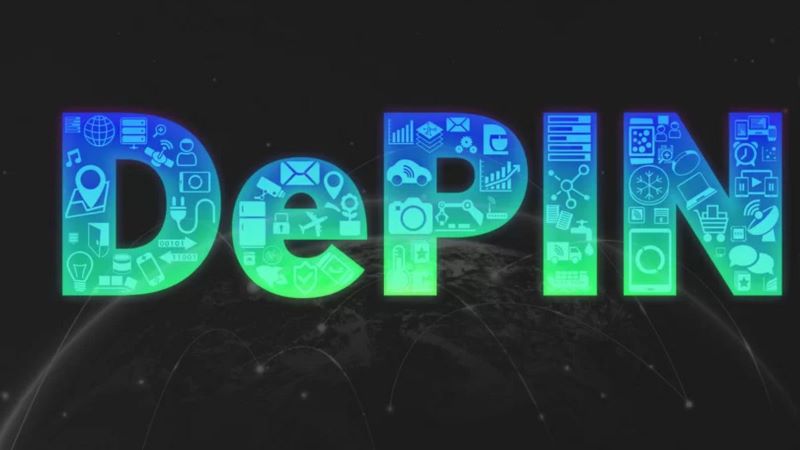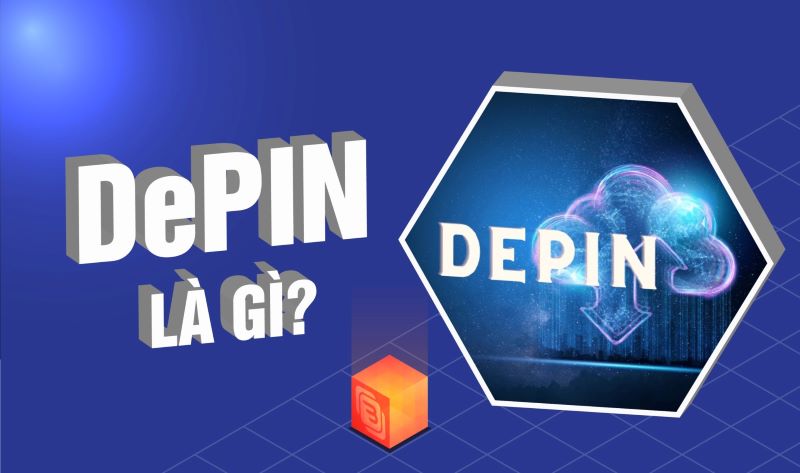DePIN hardware is the physical foundation on which the future of decentralized networks is built. These devices, from routers to sensors, empower individuals to participate in and benefit from the growth of Web3 infrastructure. Discover the important role DePIN hardware plays in shaping the decentralized landscape.
What is DePIN and why is DePIN hardware popular?
Definition of DePIN
DePIN, short for Decentralized Physical Infrastructure Networks, represents the groundbreaking convergence of physical assets and blockchain technology. This powerful combination facilitates the creation of decentralized networks that provide access to resources such as data storage and connectivity. What makes DePIN particularly innovative is its incentive mechanism: individuals who contribute their resources are rewarded with cryptocurrency.
At its core, DePIN reimagines traditional infrastructure models. Instead of relying on centralized entities, DePIN leverages a decentralized network of individual contributors who provide and manage physical resources. These resources, ranging from bandwidth and processing power to storage and sensors, are then made available to users in the DePIN ecosystem.

The Importance of DePIN hardware
DePIN hardware plays a key role in realizing decentralized physical infrastructure networks (DePIN), which aim to revolutionize the way we manage and interact with the physical world using blockchain technology.
Here are some key aspects that highlight the importance of DePIN hardware:
- Platform for Decentralized Infrastructure: DePIN hardware, such as sensors, gateways, and computing devices, form the backbone of these networks. These devices collect, process, and transmit real-world data, enabling the creation of decentralized, trustless infrastructure for a variety of applications such as smart cities, supply chain management, and IoT.
- Enables resource sharing and utilization: DePIN hardware enables the efficient sharing and utilization of underutilized resources within the community. This can include everything from spare storage space and computing power to energy and bandwidth. This promotes a more sustainable and cost-effective approach to resource management.
- Data collection and analysis enabler: Sensors and devices in the DePIN network collect large amounts of real-world data, which can be analyzed to gain insights, improve efficiency, and make informed decisions. This data-driven approach can lead to significant advances in many areas.
- Key to Security and Privacy: DePIN hardware, especially when combined with blockchain technology, can enhance security and privacy. Decentralized data storage and processing can reduce the risk of single points of failure and unauthorized access, giving individuals greater control over their data.
- Driving Innovation: The development and adoption of DePIN hardware is driving innovation in many areas. It encourages the creation of new devices, protocols, and applications that can leverage DePIN capabilities to solve real-world problems.

How does DePIN hardware support decentralized networks?
Different types of DePIN hardware
DePIN hardware includes several different types of devices, each designed for specific functions within the network:
- Routers and network devices: These devices form the backbone of the DePIN network, enabling secure and decentralized communication between different nodes.
- Sensors and data collection devices: These devices collect real-world data, such as environmental conditions, location information, or usage patterns, providing valuable insights and enabling a variety of applications.
- Storage Devices: From individual hard drives to dedicated servers, these devices provide decentralized storage solutions, ensuring data redundancy and accessibility.
Case Studies: Real-world examples of DePIN hardware in action
Several projects showcase the practical applications of DePIN hardware.

Helium network
- Hardware: Helium Hotspots, low-power wireless network devices, provide LoRaWAN coverage for IoT devices.
- Action: Users deploy Hotspots and earn HNT tokens for providing network coverage and transferring device data.
- Impact: Enables a global, decentralized wireless network for IoT applications, fostering innovation and reducing reliance on centralized providers.
Filecoin network
- Hardware: Storage providers contribute hard drive space and computing power to the network.
- Action: Users store and retrieve files on the decentralized network, paying providers in FIL tokens.
- Impact: Creates a secure, censorship-resistant alternative to traditional cloud storage solutions, promoting data sovereignty and accessibility.
MXC network
- Hardware: Low-power LPWAN gateways provide coverage for IoT devices, enabling data transfer across long distances.
Action: Users deploy gateways and earn MXC tokens for providing network coverage and facilitating data transmission.
Impact: Contributes to a global, decentralized IoT network, enabling diverse applications such as smart cities, environmental monitoring, and supply chain management.
Render network
- Hardware: GPU providers contribute computing power to the network for rendering tasks.
- Action: Users submit rendering jobs to the network, paying providers in RNDR tokens for their services.
- Impact: Offers a distributed and cost-effective alternative to traditional rendering farms, democratizing access to high-performance computing resources.
Hive folders
- Hardware: Dashcams and smartphones capture street-level imagery for mapping purposes.
- Action: Users contribute imagery and earn HONEY tokens based on data quality and coverage.
- Impact: Builds a decentralized, community-owned map that challenges the dominance of centralized mapping services and empowers individuals to contribute to a more comprehensive and accurate representation of the world.
These case studies demonstrate the transformative power of DePIN hardware, enabling the creation of decentralized networks that challenge traditional models and empower individuals and communities to participate in and benefit from shared infrastructure.
Benefits and challenges of investing in DePIN hardware
Profit potential
- Passive Income Potential: Many DePIN networks offer cryptocurrency rewards for contributing hardware resources. This provides a potential passive income stream, which is especially attractive in a low interest rate environment.
- Capital Appreciation: As demand for decentralized infrastructure increases, the value of DePIN-compatible hardware may increase. Early investors may benefit from significant capital appreciation.
- Supporting Decentralization: DePIN promotes a more open and accessible internet by reducing reliance on centralized providers. Investing in DePIN hardware aligns with the spirit of decentralization and can contribute to a more equitable digital future.
- Diversification: DePIN hardware investments can provide diversification benefits to traditional portfolios, helping to reduce overall risk.
- High Return Potential: New and rapidly growing sectors like DePIN can offer the potential for superior returns, albeit with higher risk.
Risks and challenges
- Technology Risk: Rapid technological advances can render existing hardware obsolete, leading to potential losses. Keeping up with industry developments is important.
- Market Volatility: The cryptocurrency market is notoriously volatile. The value of DePIN rewards can fluctuate significantly, affecting potential returns.
- Regulatory Uncertainty: The regulatory landscape for cryptocurrencies and DePIN is still evolving. Changes in regulations could negatively impact investments.
- Hardware and maintenance costs: Initial hardware costs can be substantial and ongoing maintenance is required to ensure optimal network performance and availability.
- Network Risk: Issues within the DePIN network, such as security breaches or technical issues, could impact the value of hardware investments.
Future prospects
The future of DePIN hardware remains promising. As the demand for decentralized services continues to grow, the need for robust and reliable DePIN hardware is expected to increase. However, it is important to approach this investment with caution and understand the potential risks and rewards. Conducting thorough research, staying informed about market trends, and choosing reputable DePIN networks are important steps to maximize your chances of success.
Getting started with DePIN hardware: A beginner’s guide
Choosing the right hardware
Before joining the DePIN ecosystem, it is important to assess your resources and goals. The type of hardware you choose will depend on factors such as your budget, technical skills, and the specific DePIN network you want to join.

Join the DePIN network
Once you have a clear understanding of your goals and resources, the next step is to choose a DePIN network that suits your interests. Each network has its own characteristics, hardware requirements, and reward structure.
Maximize your income
To maximize your earnings, it is essential to optimize your DePIN hardware setup. This includes factors such as ensuring a stable internet connection, optimizing your hardware configuration, and actively monitoring network performance.
Keep informed
The DePIN space is constantly evolving. New projects emerge regularly and existing projects continue to innovate. Staying informed about the latest developments, trends, and best practices is crucial to succeeding in the DePIN ecosystem.
Participating in the DePIN ecosystem requires careful consideration, research, and an understanding of the risks involved and the potential rewards. Staying informed and adapting to the changing landscape will be paramount for individuals and businesses looking to capitalize on the transformative potential of DePIN hardware.
Thus, DePIN hardware stands as a testament to the transformative power of decentralization. As these networks continue to evolve, the demand for reliable and efficient DePIN hardware will only intensify. Embark on your journey into the world of decentralized infrastructure and explore the vast possibilities that DePIN hardware unlocks. We hope this article from Financial Insight Daily has provided you with valuable insights into DePIN hardware.
